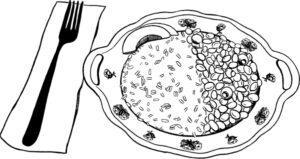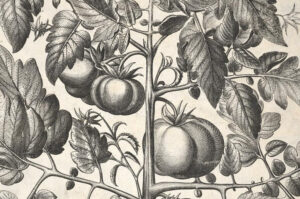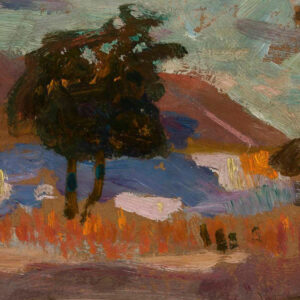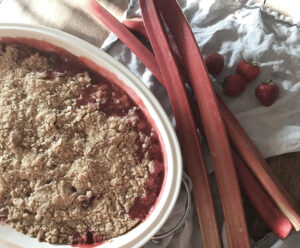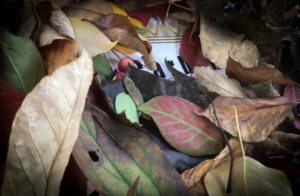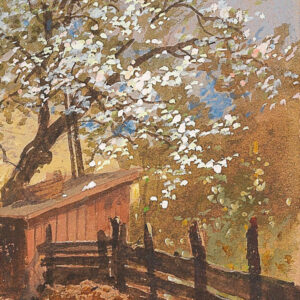Growing Mushroom

A Beginner's Guide
“Nature doth thus kindly heal every wound. By the mediation of a thousand little mosses and fungi, the most unsightly objects become radiant of beauty. There seem to be two sides of this world, presented us at different times, as we see things in growth or dissolution, in life or death. And seen with the eye of the poet, as God sees them, all things are alive and beautiful.” –Henry David Thoreau
Consider the common mushroom — or even the fancy ones. We are all familiar with them. As we will see below, they are safe and easy to grow at home. But whether a commonplace variety or an exotic, every mushroom has its origins in the most recondite yet extensive systems of life on our planet.
Within just a few cubic meters of healthy forest there are hundreds of pounds of microörganisms arranged in a complex symphony of relationships, bringing forth new life from decaying and decomposing organic matter. As these living things grow, they produce massive amounts of waste, and after they have exhausted themselves they too fall prey to the corruption which helped bring them to life. This process of death and rebirth builds the vast ecosystems and the very soil upon which all life is dependent.
If we examine the material of any ecosystem, most of what we see is the result of this long process of decay. And in this process, nature is an excellent teacher of a great truth: in this fallen yet beautiful world, new life comes after death. In the words of Wendell Berry, the author, farmer, and activist, “If a healthy soil is full of death, it is also full of life: worms, fungi, microörganisms of all kinds . . . Given only the health of the soil, nothing that dies is dead for very long.”
Among those microörganisms, fungi reign supreme, breaking down nutrients in the soil and making them available to the other organisms with which they live in symbiosis. The fungi kingdom includes yeasts and molds, but the most prominent members of the kingdom are the familiar mushrooms, which have been known and eaten since ancient times. When Ötzi died in 3200 B.C. he had two varieties of medicinal mushrooms among his possessions, but they weren’t enough to keep him from death. While today we eat only a relative handful of the estimated twenty thousand known varieties, the mycologists who study mushrooms estimate there are hundreds of thousands of mushroom species, with most spending their entire existence hidden underground. Mycology studies not only the health of soil and its vast mycelial networks (some individual examples covering several square miles) but also the pharmaceutical and culinary uses of our favorite edible fungi.
You do not have to be a mycologist, however, or have a detailed understanding of mycelial growth cycles, or have several square miles of space, to grow and enjoy mushrooms. Even for the beginner, growing mushrooms at home is surprisingly easy.
The Basics
The fungi that produce mushrooms grow under the surface of a substrate such as soil or the bark of logs. They fruit (or flush, to use the proper terminology) periodically under specific conditions. The life cycle is easy to understand. The mushroom itself contains the spores that will produce the next generation. These spores inoculate their preferred substrate (soil or wood, or sawdust in commercial settings), and begin to germinate into hyphae; the hyphae join and form mycelium which establish a broad network that feeds on the nutrients in the substrate. As the mycelium grows it will eventually begin to form a hyphal knot, a tight cluster which begins to break through the surface. As this grows it forms a mushroom which slowly opens to release its spores. This mature fruit body is the part we eat. The typical mushroom shape includes a stem and a fleshy canopy, but mushrooms show a variety of shapes and forms.
Growing Methods
We recommend three methods, good for both the novice and experienced grower. Note, however, that mushroom varieties have developed symbiotic relationships with the substrates they grow on, and will only grow on certain species of wood, in certain soils, or around the root structures of particular trees. Whichever method you choose, make sure that the mushroom you are planning to grow plays nicely with the substrate you inoculate. See the guide from Henosis.
Method 1: The Bolt Method
The bolt method uses recently cut logs that are four to five feet long and five to six inches in diameter; these logs are called “bolts.” The inoculation process starts with drilling holes into the log and filling them with sawdust or wood plugs containing the spores of the desired mushroom. The holes are then sealed with wax so the spores can begin to germinate.
Step 1) Identify the preferred wood species for your mushroom (see the guide from Henosis. Field and Forest also has helpful charts and supplies).
Step 2) Cut bolts of the appropriate wood (preferably during the winter when the tree is dormant, and the bark is healthy. Plan to inoculate the bolts within one month to avoid native competition from other less desirable fungi.
Step 3) Drill 1.25 inch deep holes into the bolts every four inches in a diamond pattern down the length of the log.
Step 4) Insert the inoculated plugs or sawdust and carefully wax over the hole to seal it.
Step 5) Wait. The spores will go to work forming mycelial networks throughout the log and will flush at their appointed time. Depending on the variety, you may need to keep the wood wet; some people encourage flushing by soaking the logs.
Method 2: The Totem Method
The totem method consists of inoculating recently cut larger logs, slicing them through their diameter and then restacking them with inoculated sawdust between the layers.
Step 1) Identify the preferred wood species for your mushroom (see the guide from Henosis. Field and Forest also has helpful charts and supplies)
Step 2) Cut a large log through its diameter every six to eight inches, creating large stackable slices.
Step 3) Spread inoculated sawdust half-an-inch to an inch thick between each slice, as if you were making a sandwich. Depending on the size of the log and how readily it stands on its own, you may need to secure each layer using additional wood and screws.
Step 4) Wait. The spores will go to work forming mycelial networks throughout the log and will flush at their appointed time. Depending on the variety, you may need to keep the wood wet.
Method 3: The Bag Method
The bag method is by far the easiest and can yield amazing results. It consists of a sealed plastic bag filled with an inoculated substrate of sawdust and husks from soybeans and cottonseed; the mycelium will spawn through the plastic (with a little help) and produce mushrooms for several flushes.
Step 1) Purchase a mushroom grow kit for the desired mushrooms.
Step 2) Remove as much air as you can, keep the bag in a moist and dark environment, and check regularly.
Step 3) When the white mycelium has grown and formed a layer covering most of the sawdust, cut at least two horizontal 4-inch slits in the bag. Be sure that your hands and the blade are clean to avoid any contamination.
Step 4) Keep the bag in a moist and dark environment and mist daily with water to keep very moist.
Step 5) Wait. When mushrooms begin to flush, harvest.
Recommended Varieties
There are a number of incredible varieties that are available to the home grower. We like Oyster and Lion’s Mane mushrooms for their ease of growing and excellent yields in a variety of climates. We encourage you to start with Oysters (Pleurotus ostreatus), which are versatile mushrooms that taste great and are easy to incorporate into nearly any dish. Lion’s Mane (Hericium Erinaceus) is also a healthy and delicious mushroom valued for its health properties and its dense, meat-like texture. Shiitakes (Lentinula edodes) taste great and are widely available but can be a little harder to grow for the novice.
A Warning from Babunia
In Poland and other parts of Eastern Europe there is a well-established tradition of harvesting wild mushrooms from the forest. Babunia’s (Polish for Grandmas) knowledge of the forest, the topography, the seasons, and the types of mushrooms keep her healthy and safe. When you grow your own mushrooms the chances of dangerous competitor fungi are rare, but in the forest deadly mushrooms masquerade as edible varieties. As the saying goes “There are old mushroom hunters, and there are bold mushroom hunters, but there are no old, bold mushroom hunters.” Please set your Babunia’s mind at ease and only eat mushrooms that you purchase from the market or grow yourself.



